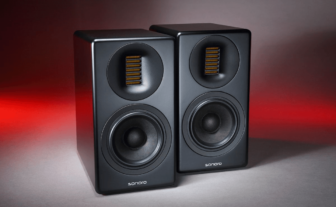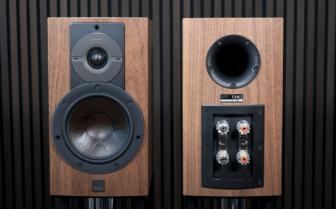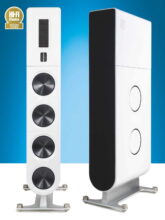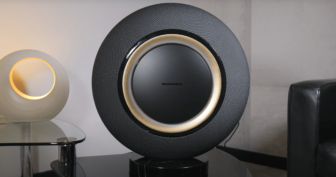Hegel Music Systems H590 Review
Hegel’s amplifier flagship H590 has it all: distortion-free power without end, plus a DAC and network functions including Roon. In addition, it is supposed to be able to compete with the best separate amplifiers.
by Tom Frantzen
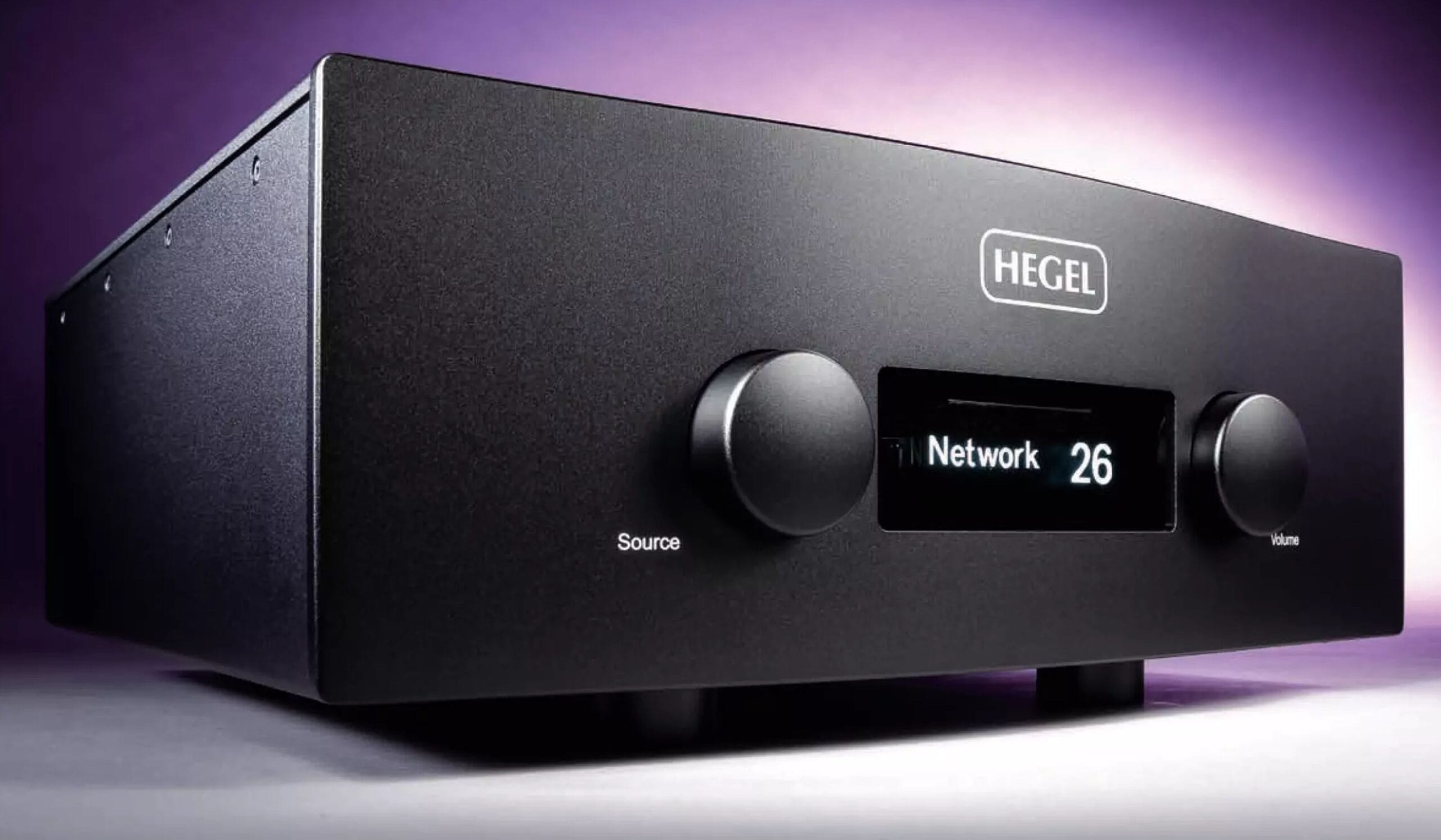
Basically, the story of the Hegel H590 begins with the thesis of a certain Bent Holter. This addressed distortions in amplifiers and ultimately led to the development of the “Sound Engine” and the founding of the company Hegel by mastermind Bent Holter.
To this day, the top development goal is to add nothing unwanted to the music signal, which means consistently avoiding distortions and noise. Currently, the circuit topology is called “Sound Engine 2” and is also implemented in the integrated amplifier Hegel H590.
Usually, amplifiers use local feedback for individual stages or “overall” feedback as a remedy. The input and output signals are compared, and basically, a correction signal is sent back through the entire amplifier. This leads to a loss of bandwidth and that the correction signal always comes too late due to the delay of the renewed pass-through, so it can only correct the following note instead of the one compared. The dynamic capabilities can suffer. Different with a more process-oriented “feedforward”, first patented in 1923 by Harold S. Black. Here, after comparing the input and the processed signal through an analog computer, a correction signal follows before it reaches the output. In this case, the once corrected signal can even be delayed. This is supposed to eliminate all, including the crossover distortions occurring between the transistors in push-pull amplifiers.
TEST DEVICES
CD Players:
Lua Appassionato MkIV Class A, LG BD 390 (Blu-ray)
Integrated Amplifiers:
Audionet WATT, Musical Fidelity M8xi
Speakers:
DALI Epicon 6, DALI Kore, KLH Model Five
Cables:
AudioQuest, Cardas, HMS, Supra
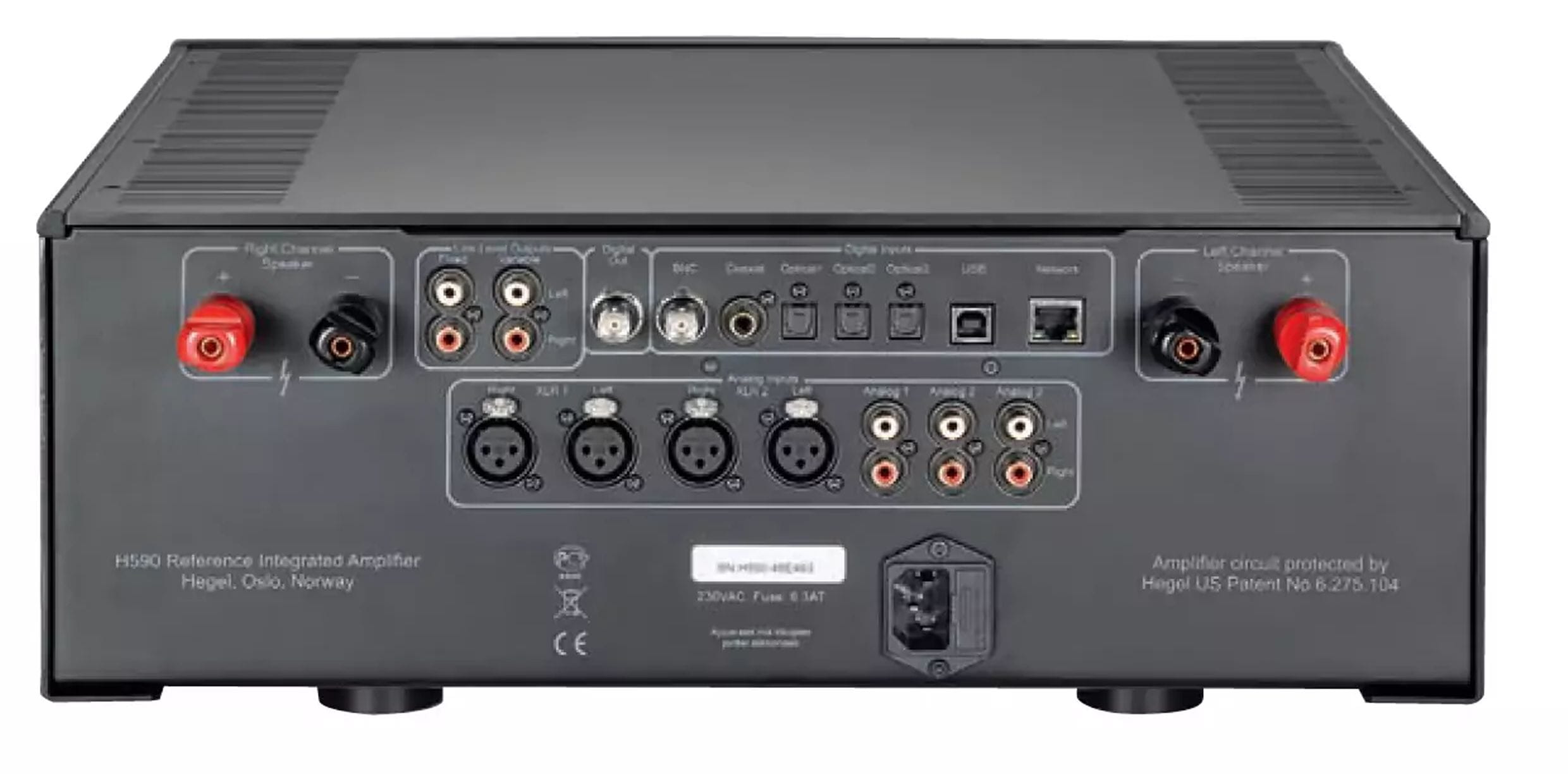
Clever Control
A special feature at Hegel is that correction is only applied when necessary, i.e., from a certain reaction threshold. Interestingly, a small amount of feedback is even used, but only at low power levels. Clearly, a Class AB amplifier operates at small levels in Class A operation, and there are no crossover or switching distortions because the transistors are not switching. Hegel holds entirely new patents on this efficient further development.
With around 22 kilograms of weight, its impressive dimensions, the massive construction, and the multitude of analog and digital connections, the Hegel H590 is a true masterpiece of an integrated amplifier. Built in Oslo like a safe, but significantly more musical.
Even if it is said that its development originally began as a pure power amplifier, in the end, Hegel aimed for a new integrated amplifier flagship with an integrated super DAC and at least rudimentary, easy-to-use streaming functions, which we will look at. It is at the same time classic and modern, ready to take on the diverse tasks in the living or music room with courage. Its enormous output power is also impressive. Not without a smile do we read the manufacturer’s power specification of—actually—301 (!) watts per channel at eight ohms. The Norwegians seem to have a sense of humor. The specified power was not quite reached in our lab only because our power grid often remains below 230 volts, so no big deal.
WE LISTENED WITH
Damien Rice:

Yello: Essential

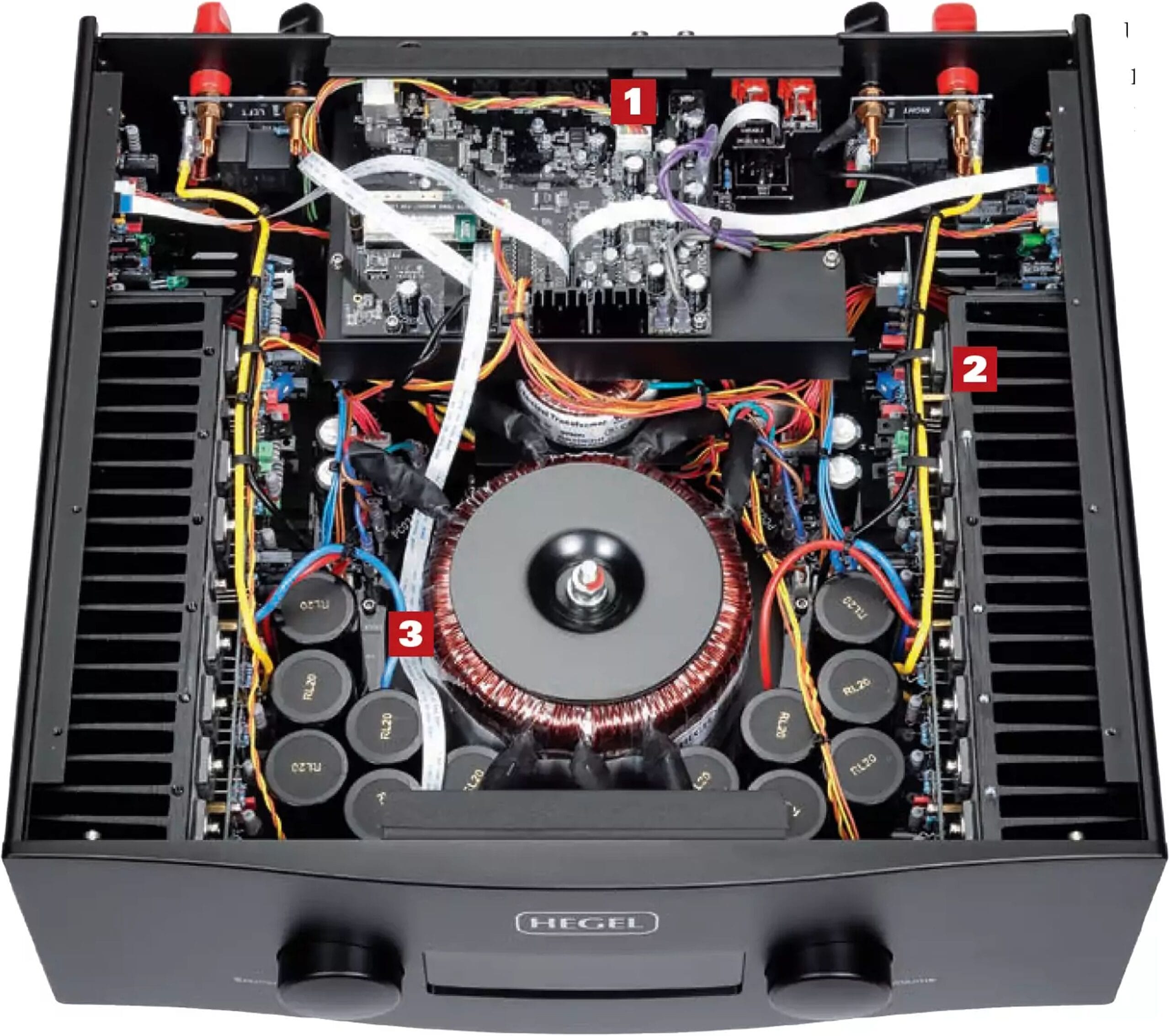
Picture-Perfect Amplifier
I admit that I particularly appreciate an amplifier when it is powerful, broadband, and also impedance-independent, i.e., can control an unpleasant load. In my experience, this pays off in special sovereignty in interaction—the breath never runs out, and due to lack of phase shifts, the energy balance in the entire sound image is also correct. So in my arsenal, there are even two feedforward amplifiers from Quad (405) and Sansui (AU-D9). That can’t be a coincidence ;-).
In fact, these properties are all outstandingly developed in the Hegel flagship. An almost heavily oversized, current-capable Class AB unit with an extremely carefully made energy department, virtually distortion-free and, of course, broadband, he can boast on the credit side. So far, we have focused on the amplifier function of the Hegel. But the Scandinavian powerhouse is much more than that. Because it also houses other functions in its chassis that can qualitatively make external devices obsolete. We are talking about a HiRes DAC as well as at least a rudimentary network player.
The AKM AK4490-based DAC with its connections—even BNC In/Out—also offers the more modern devices of the house a high-end home. In doing so, the incoming signals, whether from CD or HD sources, are fundamentally reproduced natively—i.e., without upsampling. This is part of the company philosophy of “non-falsification”. You can do that.
DLNA and UPnP compatibility ensure access to the home network; moreover, it offers Spotify Connect and especially high comfort with Apple iPhone/iPad via AirPlay. One cannot escape the impression that Hegel especially envisions how the H590 works more as a “renderer” with, for example, QNAP servers and an audio-optimized MacBook as a player. Then you can also use its pronounced DSD and MQA competencies via USB. Hegel has refrained from creating its own app but not from “Roon ready” compatibility. Sound-wise, better always means more clarity and depth gradation as well as a larger image. Compression effects due to lack of power are absent; there is more breath; everything appears more effortless; the instruments themselves in an orchestra are not crammed together. In addition, constant tempo and level changes pull you along incomparably. This is revealed by Dvorak’s “Symphony From the New World” under Mariss Jansons like hardly anything else. Everything springs, lives, appears rhythmically agile and yet cleanly ordered.
The colorful Hegel is hardly to beat sonically; it seems absolutely perfect or at least so close that NO wish remains open. The enormous cleanliness and precision of the reproduction combined with virtually infinite performance “just delivers” here. Period.
“Send Me An Angel” by the Scorpions “unplugged” in Athens, fed in via TV, draws attention. Klaus Meine has an unmistakable voice that blooms even more here than usual. But also material like Damien Rice, Yello, or the latest from Grobschnitt seem to especially honor the gourmet in me via this exceptional amp.
In conclusion, besides an undisguised emotional enthusiasm of the tester, it remains to be noted that this integrated amplifier, which is also visually not to be despised, is definitely one of the best that can be obtained in terms of equipment and sound for around $11,000. The “must-have factor” is quite enormous.
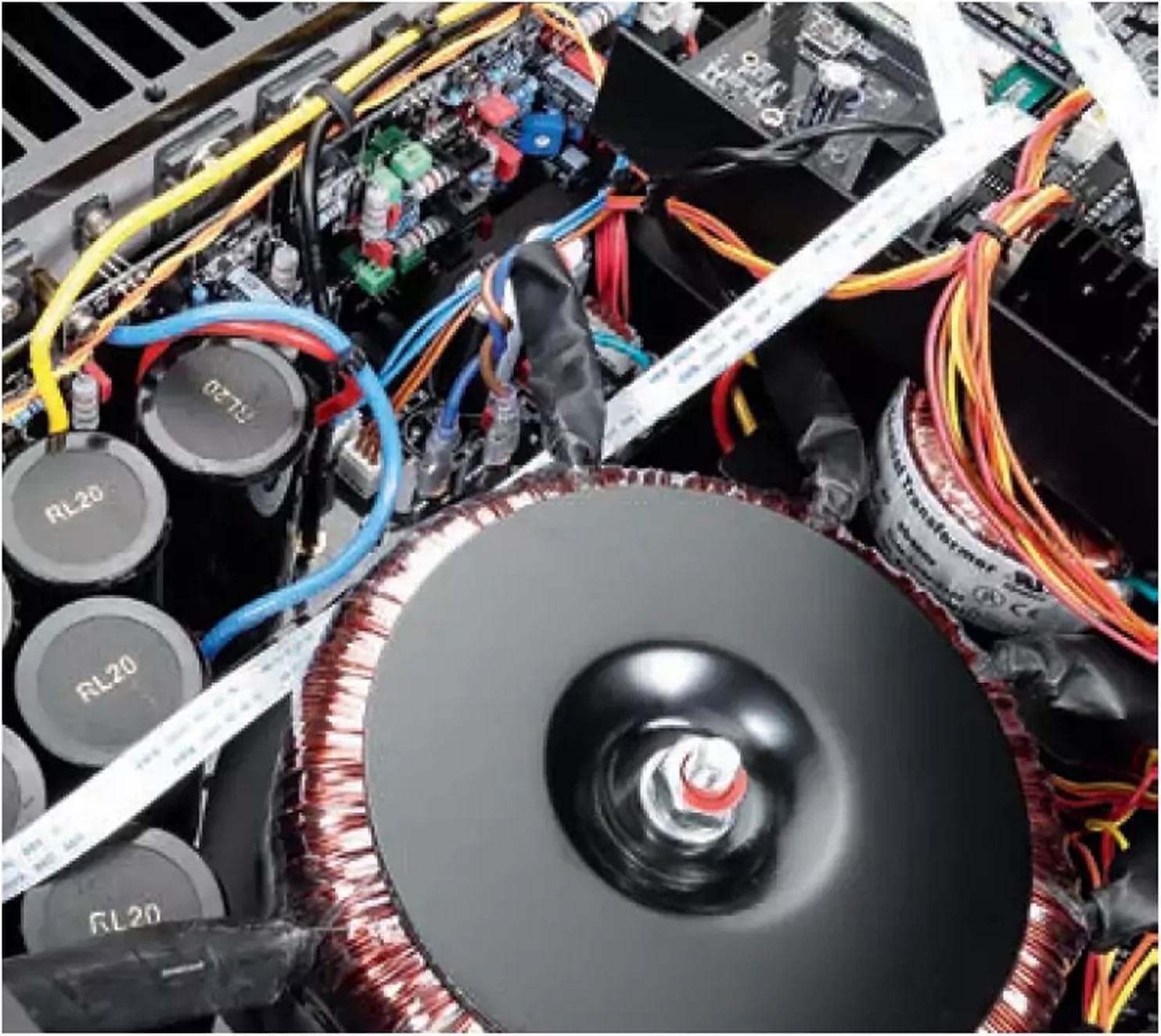
SCEPTER

Hegel H590 Specs
Price: around $11,000
Dimensions: 43x18x45 cm (WxHxD)
Warranty: 2 years
Contact: GP Acoustics
Tel.: +49 201 170390
www.gpaeu.com
Enormously powerful, big, charming, colorful, and precise sounding integrated amplifier with DAC and renderer/streamer. In terms of sound and equipment, undoubtedly one of the best amplifiers under $15,000.
Technical Specifications:
- Total Harmonic Distortion at -9dBFS: 0.005%
- Continuous Power Output (8 Ohm / 4 Ohm): 293 W / 465 W
- Impulse Power (4 Ohm, 1kHz): 761 W
- Distortion at Different Power Levels (50mW / 5W / 1dB Pmax): 0.02% / 0.0047% / 0.0082%
- Intermodulation Distortion (50mW / 5W / 1dB Pmax): 0.006% / 0.0023% / 1.8%
- Signal-to-Noise Ratio (at 50mW / 5W): -74 dB / -96 dB
- Damping Factor at 4 Ohm (63Hz / 1kHz / 14kHz): 50 / 48 / 34
- Upper Frequency Limit (-3dB at 40 Ohm): >80 kHz
- Crosstalk (Line 1 > Line 2): 86.5 dB
- Volume Control Tracking Error at -60dB: 0.09 dB
- Stereo Channel Separation at 10kHz: 67 dB
- Power Consumption (Idle): 89 W
Measurement Results
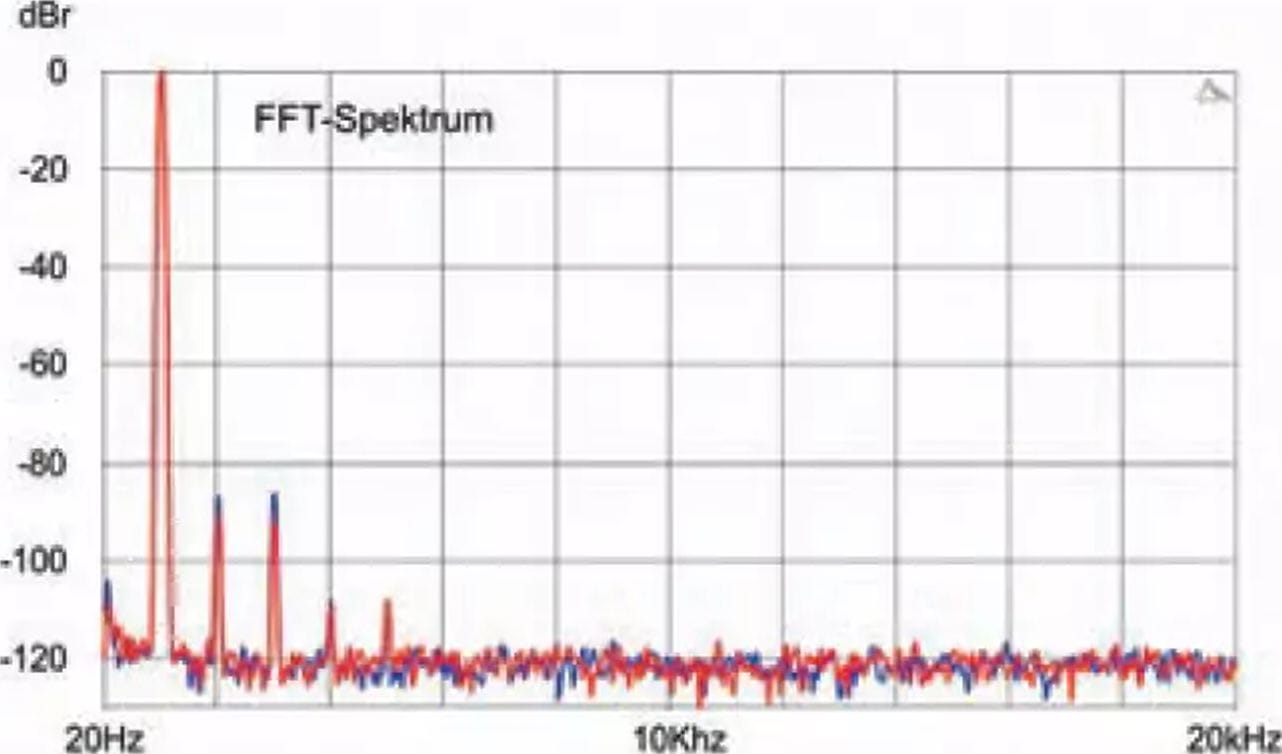
Lab Comment:
Flawless, extremely high output power (almost 800 W impulse power per channel), stable under load, very low distortion, excellent noise levels, wide bandwidth, and very good damping factor.
Features:
- Remote Control
- 32-Bit Hi-Res DAC/Streamer
- Balanced Inputs/Outputs
- 3 x Cinch Inputs
- 2 x Cinch Outputs (Variable/Fixed)
- Digital Connectivity: Airplay, LAN, USB, BNC, Coaxial, Toslink
- Streaming: Spotify Connect, Roon Ready
- Smart Home / Sonos Integration
Test Result:
- Sound Level: 98% → 9.8/10
- Price/Performance: ★★★★☆ (Excellent)
Hegel H590: Reference or Illusion?
The Hegel H590 according to several aufiophiles and professionals is a reference integrated amplifier. Is this true or is it simply an ...



